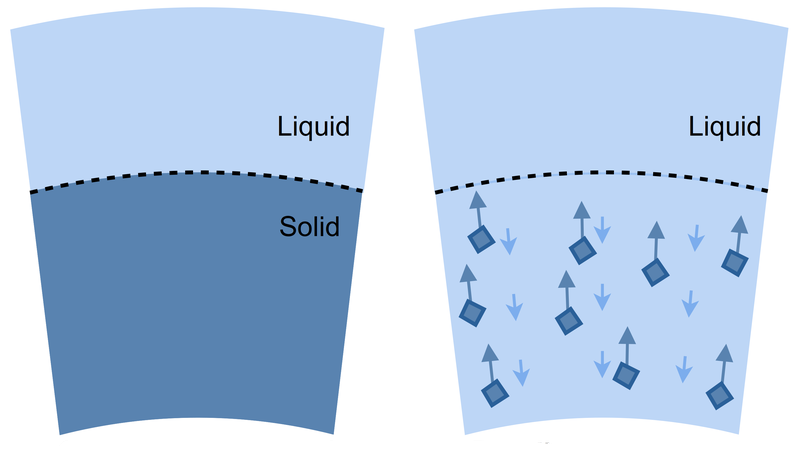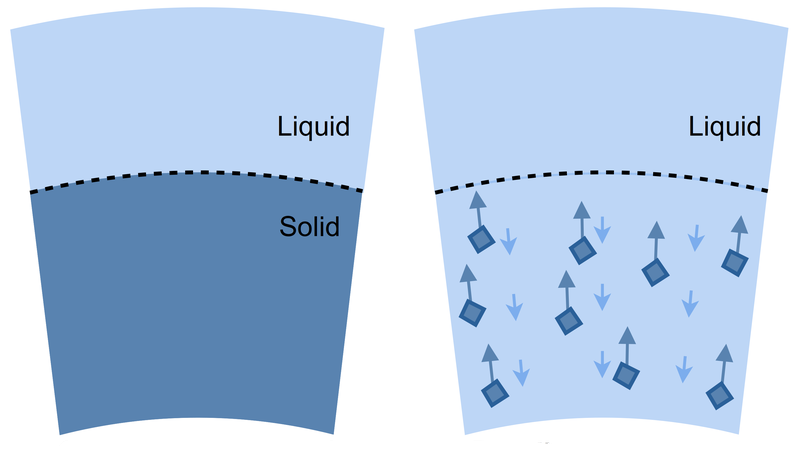Some White Dwarfs Might be Older than Previously Thought
More than 97% of the stars in our Galaxy will end their lives with a whimper—slowly cooling as stellar remnants known as white dwarfs. The cooling of white dwarfs follows a pattern that was thought to be so predictable that the temperatures of white dwarfs are used to determine the age of surrounding stars. New findings, however, indicate this pattern may need revision [1]. Predictions made by Antoine Bédard of the University of Warwick, UK, and his colleagues now indicate that some white dwarfs may undergo a process that “reinvigorates” the stars, significantly slowing down the cooling process. That change could alter the calculated ages of white dwarfs by billions of years.
When a small star (one with a mass 8 times or less that of the Sun) runs out of nuclear fuel, it sheds its outer layers to form a planetary nebula. The core of the star then collapses into a white dwarf. Producing no heat, white dwarfs spend their existences radiating their remaining energy into space, cooling and solidifying from the inside out. Or so astrophysicists thought.
In 2019, this model was disrupted by astronomers analyzing data from the European Space Agency’s Gaia mission. The researchers identified a previously unknown population of white dwarfs within the Milky Way with anomalous properties [2]. As stars age, their velocities increase with respect to nearby stars because of repeated gravitational interactions with those stars. The newly identified white dwarfs, dubbed the Q branch, have much higher average velocities than models indicate they should have based on their temperatures, a finding that suggests that the Q-branch white dwarfs are older than previously thought. Some process is slowing down the cooling.
To tease out why the white dwarfs are anomalously warm for their age, Bédard and his colleagues modeled how any impurities present within these stars might affect cooling timescales. The model shows that as an impurity-laden white dwarf cools, material starts to crystalize in its center. These crystals contain fewer impurities and are less dense than the surrounding fluid and so rise toward the white dwarf’s surface [3]. Once the crystals reach a certain height, they melt, displacing heavier liquid downward.
The team showed that the convection-like movements induced in the white dwarf’s fluid by the crystal repeatedly forming, rising, and melting can reheat a white dwarf, as the motion converts gravitational energy into heat. The same energy-conversion process happens when an object is dropped, Bédard says. “If you drop something heavy from a certain height, its gravitational potential energy turns into kinetic energy, and when it hits the ground, friction turns the kinetic energy into heat,” he says.
This process could by triggered when a white dwarf merges with another star, for example, creating a higher mass white dwarf. During such a merger, the temperature of the white dwarf increases significantly, causing most of the hydrogen and helium near the white dwarf’s surface to burn, Bédard says. Those nuclear reactions then produce (among other things) neutron-rich impurities.
“This [heating] mechanism is very reasonable, and it significantly changes our understanding of white dwarf evolution,” says Mukremin Kilic, an astrophysicist who studies white dwarfs at the University of Oklahoma in Norman, who was not involved in the study. The heating mechanism also has potentially significant implications for using white dwarfs as cosmic clocks. Even though only a small percentage of white dwarfs likely undergo mergers, Bédard says that identifying which white dwarfs are delayed is a nontrivial problem. “The Q branch is a statistical overdensity of stars, but within the Q branch we cannot easily tell a delayed white dwarf from a normal one,” he says. “This [issue] means that astronomers will need to be careful when using high-mass white dwarfs to measure stellar ages.” Despite that caveat, Bédard says that mis-aging could mean that the Milky Way is a billion years older than previously thought.
–Elizabeth Fernandez
Elizabeth Fernandez is a freelance science writer based in Raleigh, North Carolina.
References
- A. Bédard et al., “Buoyant crystals halt the cooling of white dwarf stars,” Nature 627 (2024).
- S. Cheng et al., “A cooling anomaly of high-mass white dwarfs,” Astrophys. J. Lett. 886 (2019).
- S. Blouin et al., “22Ne phase separation as a solution to the ultramassive white dwarf cooling anomaly,” Astrophys. J. Lett. 911 (2021).





